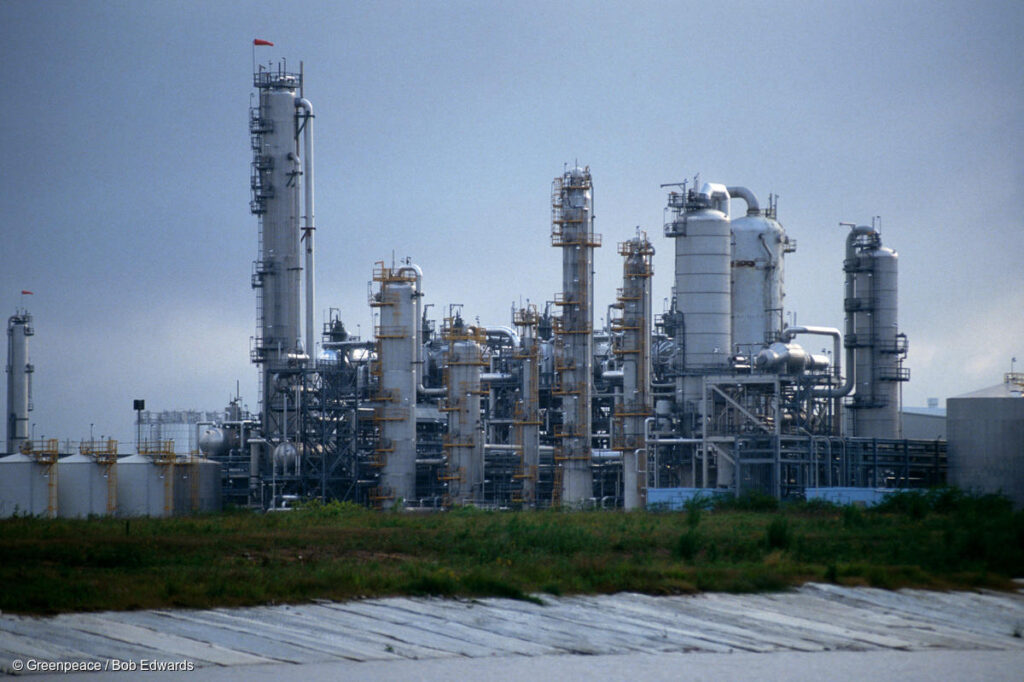Introduction
PVC Poison Plastic: An investigation following the Ohio train derailment of widespread vinyl chloride pollution caused by PVC production
Introduction
On February 3, 2023, the disastrous derailment of a Norfolk Southern train in East Palestine, Ohio damaged six rail cars carrying the known human carcinogen vinyl chloride.[1, 2] The chemical leaked from the damaged cars into the surrounding community and was ultimately burned, unleashing a massive smoke plume almost certainly containing a cocktail of persistent toxic chemicals.
This devastating incident is a painful reminder of the inherent dangers of making, transporting, using, and disposing of vinyl chloride and other chemicals in plastics—especially polyvinyl chloride (PVC) plastic. Globally, approximately 99% of all vinyl chloride is used for the production of PVC and its copolymers.[3]
Every day, PVC production exposes communities around the country to vinyl chloride and other PVC chemicals, a result of the inadequate U.S. regulatory system that allows the use of the most hazardous chemicals and plastics.
This investigation uncovers the largest polluters of vinyl chloride in the U.S. and maps the communities regularly exposed to this dangerous chemical and its waste products.
To quantify and map the pollution from U.S. PVC production, we analyzed data submitted to the U.S. Environmental Protection Agency (EPA) under the Toxics Release Inventory (TRI) program for the year 2021.[4] We also analyzed the data companies submit to EPA under its Chemical Data Reporting program to learn the total quantities produced.[5] We used EPA’s EJScreen tool to analyze the demographics of people living in communities closest to vinyl chloride and PVC chemical plants and disposal sites.[6] This data was compiled to create the map below.
This investigation reveals that the production of PVC plastic releases hundreds of thousands of pounds of carcinogenic vinyl chloride into the air every year in the U.S. Vinyl chloride factories produce billions of pounds of vinyl chloride to make PVC plastics often in low-income communities and communities of color. We also found that vinyl chloride and PVC factories report transferring millions of pounds of hazardous chlorinated waste to incinerators, cement kilns, and landfills in the south-central U.S. Incinerators, cement kilns, and landfills are well-known sources of dioxin pollution.[7] Vinyl chloride and PVC factories also transferred dioxins to incinerators and landfills.

Read the report
- I.Introduction
- II.Not an isolated incident
- III.Largest vinyl chloride polluters
- IV.PVC plastic and environmental justice
- V.Interactive Map
- VI.Vinyl chloride and toxic waste
- VII.Safer Solutions
- VIII.Methodology
- IX.Credits and Creative Commons License
- X.References
